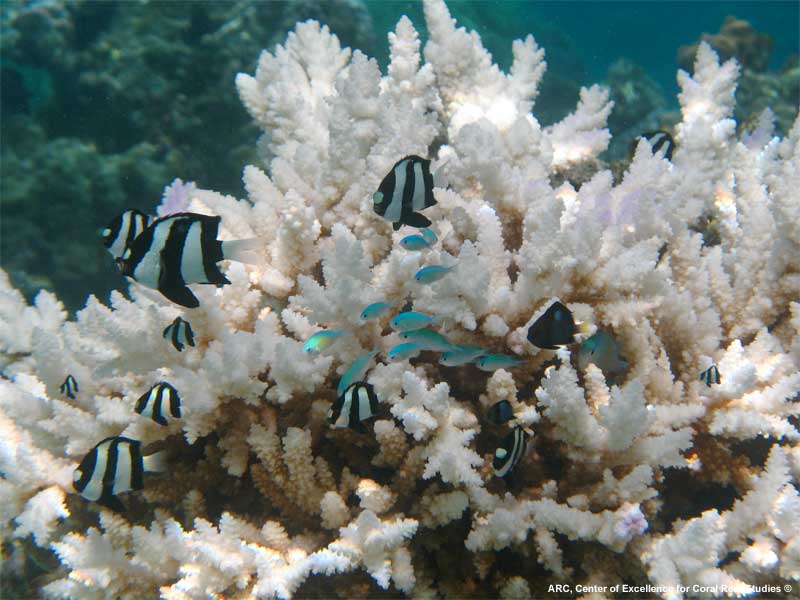Coral Bleaching is More Urgent Than You Think
This is a photo of a bleached coral. The abnormal color of the organism makes it stand out and much more prone to diseases.
January 30, 2018
Coral reefs are considered to be some of “the most diverse ecosystems of the world,” due to the fact that they house around one-third of marine biodiversity. One-third, at a glance, seems as if it is only a little–but, if put into perspective, amounts to 2 million species. Despite this vast range of species, coral reefs exist in only 0.1% of oceans. The size of the ecological community is very small in comparison with the rest of the water bodies’ massiveness. Yet the importance of coral reefs weighs heavily on the well-being of others and their habitats.
Thousands of countless lives are affected by the coral reefs. Whether it be food or job-related, the importance of the marine ecosystems has a large impression on them. Many individuals depend on the reefs for ecological services, such as coastal protection from large storms or floods. In addition to being crucial for protection from harmful weather factors, the reefs are considered to be key spawning/nursery grounds for economically vital fish and aquatic species. Many organisms found living in the reefs may possibly be able to contribute to future medical advances, such as aiding in the hunting for the cure of cancer and HIV.
Yet, with all of the possibilities and hopes of the coral reefs, they are suffering from countless problems. According to WWF Global, “Roughly one-fourth of coral reefs worldwide are already considered damaged beyond repair with another two-thirds under serious threat.” Problems affecting the marine ecosystem include climate change, pollution, sedimentation, over fishing, and coral mining.
One major problem contributing to coral reef destruction is coral bleaching. Coral bleaching is a process where a group of coral loses its color because of the microscopic algae losing its pigments. Coral bleaching is caused by many factors, such as changes in the environment and conditions, ocean temperature, runoff and pollution, overexposure to sunlight, and extremely low tides. It’s mainly caused by warm water temperatures, yet not all bleaching events are due to this factor.
Healthy, normal coral has algae living on it–the algae gives the organism color–and both the coral and algae rely on each other for survival. But when the algae becomes “stressed,” it will start to leave the coral. The coral will then expel the remaining algae from its tissue, turning the coral completely white. It’s left “bleached” and vulnerable to outlying external diseases.
Eventually, if the situation does not get better, then the coral reefs will soon be gone, which is considered to be “fatal unless conditions are reversed in a reasonably short time.” In order to help prevent coral bleaching and other harmful effects on the aquatic environment, we humans need to learn how to be resourceful with the world we have.
The Arc Centre of Excellence’s Coral Reef Studies states that “final results of extensive aerial and underwater surveys reveal that 93% of the reef has been affected.”


